#grand duke of lithuania jogaila
Explore tagged Tumblr posts
Text
al things considered — when i post my masterpiece #1386

first posted in facebook january 19, 2025
józef simmler -- "queen jadwiga's oath" (1842)
"[in the year 1386], grand duke of lithuania jogaila (having been baptised on february 15 in wawel cathedral, kraków, and on february 18 married jadwiga, 12-year-old queen regnant of poland) is crowned władysław II jagiełło, king of poland, beginning the jagiellonian dynasty" … wikipedia
"a movie without at least one live music performance is like a pope without artificial teeth? … aki kaurismäki
"it appears that 1386 was quite a year in poland … not only was a 12 year old child crowned the country's first woman monarch (and you think WE might have problems on january 20th?!?!?), but judging by her husband's name, he might be a distant relative (or the namesake?) of the legendary polka musician li'l wally jagiełło" … al janik
#józef simmler#queen jadwiga's oath#1386#wikipedia#kraków#grand duke of lithuania jogaila#władysław II jagiełło#aki kaurismäki#a pope#artificial teeth#li'l wally jagiełło#polka#al things considered
0 notes
Text








#royal treasures#historical treasures#medieval europe#Vilnius Cathedral#Alexander Jagiellon#Aleksandras Jogailaitis#king of poland#grand duke of lithuania#Elizabeth of Austria#burial insignia#coffin plaque#Barbara Radziwill#Sigismund II Augustus#monarch#lithuania#poland#vilnius#necropolis#Grand Duchy of Lithuania#Vilnius Church Heritage Museum#endoscopic camera#15th century#16th century#1400s#1500s#cathedral#world war 2#priceless#artifacts.#royal
13 notes
·
View notes
Text

Royal Treasures Hidden Since World War II Recovered From Cathedral
Historical treasures hidden for decades have been uncovered in the crypts of a cathedral, with items including burial crowns and insignia belonging to Medieval European rulers.
The cache from Vilnius Cathedral, in Lithuania, has not been seen since the outbreak of World War II in 1939, according to a press release from Go Vilnius tourism promotion agency on Wednesday.
Items include a crown belonging to Alexander Jagiellon, or Aleksandras Jogailaitis, King of Poland and Grand Duke of Lithuania, who lived from 1461–1506.
Other artifacts include a crown, a chain, a medallion, a ring and a coffin plaque belonging to Elizabeth of Austria, or Elžbieta Habsburgaitė, who lived from 1436–1505.


There was also a crown, a scepter, an orb, three rings, a chain and coffin plaques associated with Barbara Radziwiłł, or Barbora Radvilaitė. She was married to Sigismund II Augustus, or Žygimantas Augustas, King of Poland and Grand Duke of Lithuania, and died in 1551.
“The discovered burial insignia of the monarchs of Lithuania and Poland are priceless historical treasures, symbols of the long tradition of Lithuanian statehood, signs of Vilnius as the capital city, and magnificent works of goldsmithing and jewellery,” said Vilnius Archbishop Gintaras Grušas in a statement by the Vilnius Archdiocese on Thursday.
The artifacts would have been put inside the sarcophagi of the royals when they were laid to rest, and the crowns would not have been worn, instead being made after death to form part of the burial tomb, according to the statement.



“This reflects the burial and honouring practices of the time,” the statement adds. “This discovery is of particular importance for our statehood, as it shows the location of Vilnius Cathedral as the necropolis of the elite of the Grand Duchy of Lithuania.”
“These symbols are important both for the State and for each of us, as signs of European identity, as a reclaimed identity of the old State, as a sign of the strength of our roots,” said Rita Pauliukevičiūtė, director of the Vilnius Church Heritage Museum, in the Archdiocese statement.
The items were first discovered in 1931 when the cathedral was being cleaned following a spring flood, revealing a crypt containing the remains of the rulers.


They were put on display until World War II broke out in 1939, when they were hidden. Several fruitless searches were carried out before researchers turned their attention to the crypts in September 2024.
Using an endoscopic camera, the artifacts were finally recovered in December, wrapped in newspapers dated September 1939.
“They will be examined, restored and presented to the public in the future,” according to the archdiocese.
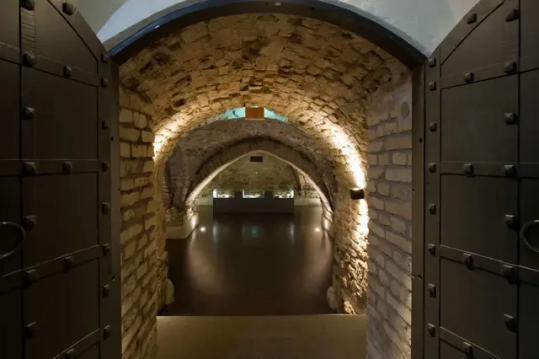
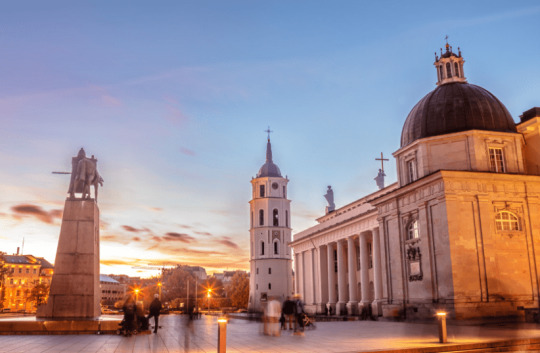
#Royal Treasures Hidden Since World War II Recovered From Cathedral#Vilnius Cathedral#Lithuania#crown#artifacts#archaeology#archeolgst#history#history news#ancient artifacts#ancient art
103 notes
·
View notes
Text


The monument to Grand Duke Alexander Jogailaitis of Lithuania (also the king of Poland) was created by Ukrainians Oleś Sydoryuk and Borys Krylov and is now standing in Kaunas. The cats were added by Lithuanian artist Herta Burbė. :)

#lithuania#Ukrainian art#Lithuanian art#укртумбочка#укртамблер#Poland#Ukraine#украрт#sculpture#cats#catblr
8 notes
·
View notes
Text

Alexander I Crowned as King of Poland
Artist: Michał Stachowicz (Polish, 1768–1825)
Date: 1815-1825
Medium: Oil on paper glued to canvas
Collection: National Museum in Kraków, Poland
Alexander I
Alexander Jagiellon (Polish: Aleksander Jagiellończyk; Lithuanian: Aleksandras Jogailaitis; 5 August 1461 – 19 August 1506) was Grand Duke of Lithuania from 1492 and King of Poland from 1501 until his death in 1506. He was the fourth son of Casimir IV and a member of the Jagiellonian dynasty. Alexander was elected grand duke of Lithuania upon the death of his father and became king of Poland upon the death of his elder brother John I Albert.
#panting#oil on paper#canvas#mihal stachowicz#polish painter#polish history#men#women#landscape#coronation#polish art#polish royalty#european art#19th century painting
2 notes
·
View notes
Text
Republic Of Many Nations - Historical Opportunity for Central/Eastern Europe?
(This is a translation of an exhibition created with the cooperation of multiple Slovak and Polish institutions for the study of history that hanged in the corridors of University of Prešov in late 2023. Consider this an introduction to Rzeczpospolita for all my 1670 girlies. It's heavily biased in favor of Rzeczpospolita, luckily in ways that are neither subtle, nor do they detract from its informational value. I am leaving out most of the pictures and the commentary under them, as well as the quotes included - simply because I couldn't fit them into the format of a tumblr article. The notes bellow in [] brackets are mine, the rest of the text is from the exhibition itself, and the pictures, or something close to them - like the same building from a different angle - appeared on the exhibition panels as well. Commentary on the pictures is also from the exhibition.)
***
Did you know that from the end of the 14th century untill the end of the 18th century a unique republic existed in what is now Poland, Lithuania, Ukraine and Belarus, which was the biggest state in Europe and which wasn't founded by military expansion, but by a peaceful alliance of Kingdom of Poland and Grandduchy of Lithuania? This republic gradually fell to the pressure of surrounding absolutist monarchies led by the Tsardom of Muscovy [1], but its legacy persists in the ethos of civil liberties, democratic participation and diversity. Legacy of this republic has become a part of the identity of nations in the Middle/Eastern Europe, which for more than two centuries resisted Russian imperial rule and which cling to these values to this day.
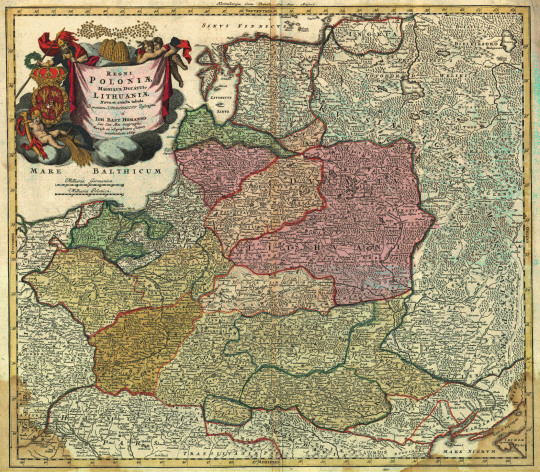
1.) REPUBLIC OF MANY NATIONS The beginings of the "republic of many nations" can be traced to the year 1385, when the hand of Jadwiga, heir to the Polish throne, was offered to Jogaila, the Grand Duke of Lithuania, with the stipulation that he should become a Christian. When Jogaila ascended the throne of Poland as Władisław II. Jagiełło, it created a dynastic link between Poland and Grandduchy of Lithuania, which besides Lithuania consisted of lands in today's Belarus and Ukraine. When on the 1st of July 1569 in the Lublin Castle Polish nobility agreed to extend their privileges to the Lithuanian nobility in exchange for Lithuania ceding large territories to the Polish crown, an agreement was born, on the basis of which a dynastic union transformed into a commonwealth, now called Rzeczpospolita, i.e. The Republic. Though initially the union of these polities was motivated by the existence of common enemies - the Teutonic Order and later Russia - the strongest bond between them turned out to be the unique arrangement established by the Polish and Lithuanian representatives. The "Republic" in the name of this polity was supposed to demonstrate that the Commonwealth would be ruled by its noble citizens regardless of whether their mother tongue was Polish, Lithuanian or Ruthenian (common ancestor of Rusyn, Belarussian and Ukrainian). Though Republic was for hundreds of years plagued by numerous internal issues, and by the end of the 18th century it was destroyed by the aggression of its neighbours, in 1791 citizens managed to approve a unique document - Constitution of 3 May 1791, now considered the first modern constitution in Europe...
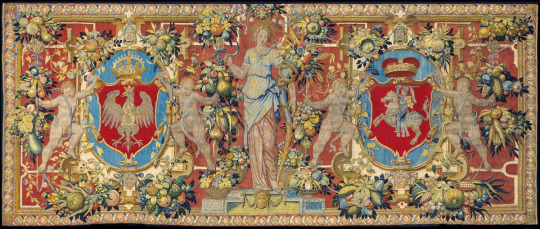
2.) STORY OF THE CROWN AND THE GRANDDUCHY Even after the Union of Lublin, the Polish Crown and Grandduchy of Lithuania were still separate states, just like they used to be for hundreds of years before that. After all, the rulers of Poland had their own archbishopric and royal title since the early 11th century, struggling for power against the likes of Přemyslids, while the grand dukes of Lithuania, attempting to revive the legacy of Kievan Rus', still hesitated whether to accept baptism from Rome or Constantinople. While many of the differences between them disappeared after the creation of Polish-Lithuanian Commonwealth, as the Lithuanian estates adopted the lifestyles of Polish nobility, the grandduchy continued to have their own legislature in the form of so-called Lithuanian Statutes, as well as their own army and finance, and a strong sense of self-determination. However, the connection between Lithuanian and Polish society was very strong - in October 1791, shortly before the final occupation of the Republic by the Prussians, Russians and Austrians both Polish and Lithuanian representatives agreed upon The Mutual Vow Of Both Nations [2], in which they promised that the story of Rzeczpospolita should continue in perpetuity as an indelible federation of the two countries...
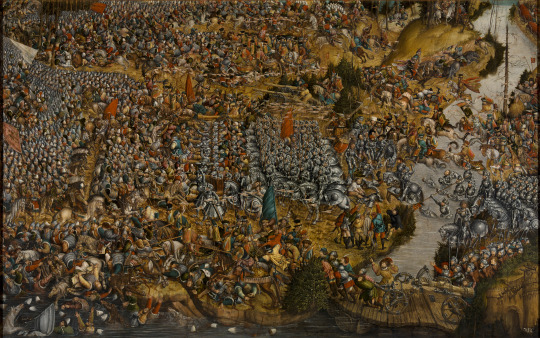
3.) THE STORY OF UKRAINE: A MISSED OPPORTUNITY FOR THE REPULIC? While its name points to a country "somewhere on the edge", Ukraine was a tempting target for many powers since the Middle Ages. After the fall of Mongolian Golden Horde in the 14th century, it was, as the former core of Kievan Rus' added to Lithuania, which presented itself as a continuation of this great Kievan empire. In this way, Lithuania came into the crosshairs of Muscovy, which held similar aspirations. After 1569 the Commonwealth of Poland-Lithuania, which in many ways respected the distinct Ukrainian identity and unlike Moscow didn't consider it to be just a branch of the Russian nation, became its protector from the Muscovite incursion into Ukraine. Even the Polish-Lithuanian nobility living in Ukraine identified and called themselves "Ruthenians", and Grand Duchy of Lithuania used so-called Ruthenian as its official language. Cossacks living in the Wild Fields in the Dnipro river basin, who on the one hand didn't accept the autority of Polish-Lithuanian nobility, on the other hand helped to safeguard the borders of Rzeczpospolita from Moscow and the Ottomans, were also bearers of the sovereign Ukrainian identity. In the middle of the 17th century dissatisfaction of the Cossacks with certain magnates and issues of religion grew into the bloody uprising of hetman Bohdan Khmelnytsky, who in 1654 turned to the Muscovite tsar [1] with a plea for protection. However, among the Cossacks, critical voices towards Moscow could also be heard, especially the voice of Ivan Vyhovsky, who in 1658 made a deal with the Commonwealth of Poland-Lithuania about its transformation into the Republic of Three Nations with a coequal position of the Grand Duchy of Russia [3] and orthodoxy. Because of the opposition from a portion of nobility, Cossacks and Moscow, the agreement never went into effect, and thus both the Republic and Ukraine missed their historic chance...
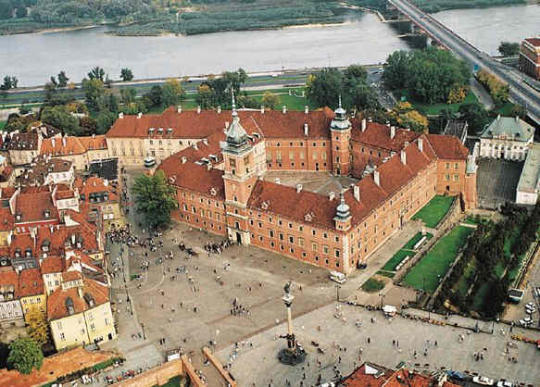
4.) KING IS THE FIRST AMONG US, THE FIRST AMONG EQUALS The creation of Polish-Lithuanian Commonwealth was also a key flashpoint for the transformation of royal power. Since Polish king Sigismund II. August, who thanks to the Union of Lublin became the ruler of Rzeczpospolita, died in 1572 without issue, Polish-Lithuanian nobility in accordance with the original agreement established the viritim election principle, according to which every noble present could elect their own king on special convocational sejms (diets). Ruler elected in this manner had to confirm noble privileges trough the so-called Henrician Articles and a collection of vows Pacta Conventa. Ruler's political power was thus perpetually subject to the rule of law (lex regnat non rex), and if the nobility deemed the ruler's actions unlawful, they could in the case of an emergency even call up a confederation and declare armed resistance. Thus, from then on until the acceptance of Constitution of 3 May 1791, the election of Polish-Lithuanian monarch became subject to the interests of foreign dynasties and local magnate houses. In the 18th century, an era during which the surrounding countries mostly adopted absolutism, the weakness of royal power came to be seen as the fundamental reason for the political decline of the Republic.
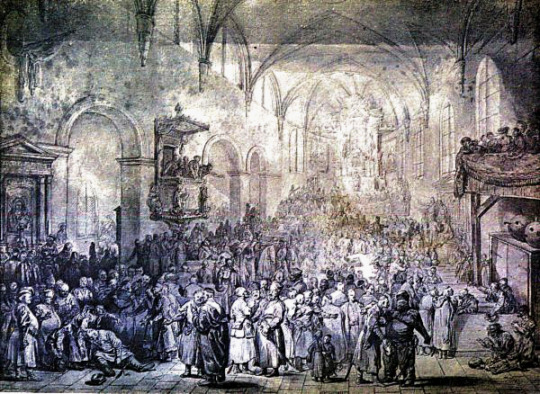
5.) NOT A MONARCHY, NOR AN ARISTOCRACY, NOR A DEMOCRACY The name Rzeczpospolita (the Republic) wasn't chosen for the Commonwealth of Poland-Lithuania by accident. Polish-Lithuanian nobility actually believed that their country can revive the lost ancient legacy of the just polities, and so they considered their Rzeczpospolita, to which they had given the epithet "most serene" [2], to be the third real republic in human history (after the Roman and Venetian ones). Members of the Polish nobility, who were convinced that the noble station brings with itself the duty of civic virtues, thus positioned themselves as the new Aristotles, and considered the so-called mixed constitution, which combined virtues of the monarchy, aristocracy and rule of the people, to be the best way to organize the state. Power in Rzeczpospolita was thus divided between the elected king, the Senate consisting of highest state officials, and a chamber of noble-born representatives, who could use the later infamous liberum veto [4], or the right of individual protest, which especially in the 18th century severely hampered the flexibility of the Republic. However, in the Republic, a specific form of political decisionmaking wasn't practiced only by the parliament of nobles. In Ukraine, the Zaporozhian Cossacks created a very peculiar form of military democracy. In their fortified camps (sietches [2]) the sietch councils formed by direct election, and they in turn elected their military commanders (atamans) and government officials, made decisions about war and piece, economic policy, even legal judgements.
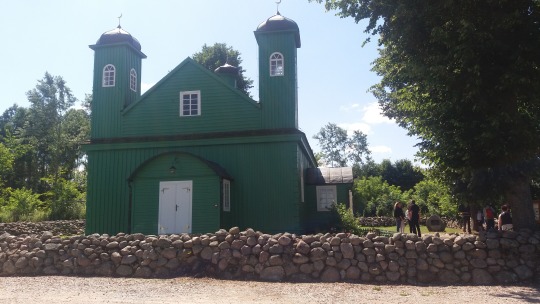
6.) DIFFERENT FAITHS LIVE TOGETHER WITHOUT NEED FOR BORDERS Calling the ancient Republic "Polish" might be misleading, because today the epithet "Polish" is tied mostly to the ethnic nation. However, since in the Polish-Lithuanian Commonwealth, the nation was the nobility, which based its honour on citizen loyalty towards the common polity inspired by antiquity, the noble "nation" at the time included all members of the class no matter the country they were born in, language they spoke, or the faith they professed. That's why, concerning the question of self-perception in the period, we often see the phrase "I am of the Polish nation, but of Ruthenian birth." This citizenship-based definition of Polish identity was closely related to the unprecedented religious tolerance, as codified in 1573 by the so-called Warsaw Confederation. The fact that the noble "nation" included not only Catholics, Lutherans, Calvinists, Uniates and Orthodox Christians, but Mennonites and Arians, led to Rzeczpospolita being called "a state without stacks", because the foreigners there didn't end up burned at a stake, but finding a refuge. However, in the 18th century, this fragile coexistence of different denominations was severely disturbed, because the neighbouring great powers loved to use the rights of religious minorities for their own ends. In the 3 May 1791 constitution, all faiths were thus tolerated, but the Catholicism was supposed to be the state religion.
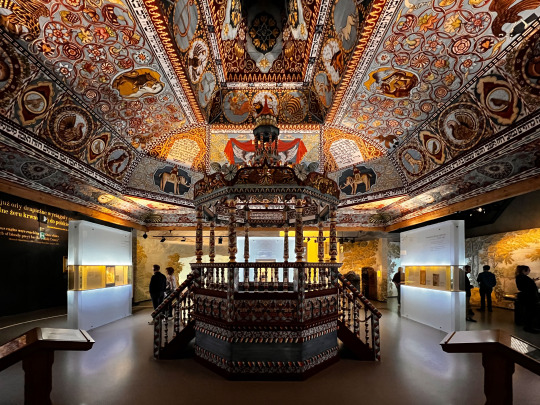
7.) POLONIA PARADISUS JUDAEORUM While the Jewish people were often banished from the rest of medieval European countries, kings of Poland granted many privileges to the arriving Jews. That being not just The Great Charter of Jewish Rights [2] from 1264, but also Privilegia de non tolerandis Christianis, which allowed Jewish merchants to settle in designated communities without Christian competition. Jews gradually gained the right to their own local administration (so-called kahalas) and around the time of the Union of Lublin even to summon their own parliament, called the Diet of the Four Countries [2] (also known as Va'ad). It is therefore no wonder that in the 16th century Europeans started to call Rzeczpospolita "Jewish paradise" and that three quarters of the entire Jewish population of the world lived here. This peaceful coexistence started to suffer in the middle of the 17th century, mainly because of Cossack uprisings, during which thousands of Jews were massacred for being alleged allies of the nobility, while in the 18th century the country experienced general decline in religious tolerance. However, as part of the attempt to save the Republic during the so-called Great Sejm [2] of 1788-1792, a special commission was created to designate the position of Jews within Rzeczpospolita. And when the famous Kościusko uprising defending the independence of Rzeczpospolita and the legacy of the Constitution of 3 May 1791 against the Russian invasion broke out, many Jews didn't hesitate to join the first Jewish regiment and fight in battle for the Republic.
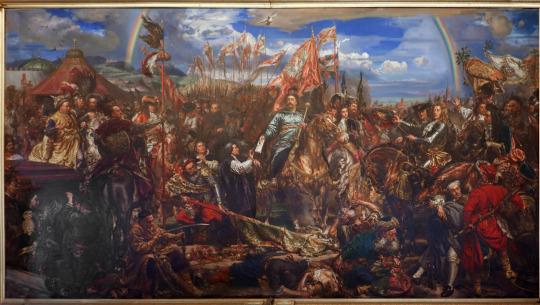
8.) WALLS OF CHRISTIAN EUROPE Noble citizens didn't perceive their Republic as just an embodiment of ancient community, but also a military power. That's why the nobility placed so much value on military virtues and in emulation of ancient Sarmatians, whose descendants they considered themselves to be, they also relied heavily on elite cavalry - the winged hussars, whose exotic appearance and military prowess gained them respect on the battlefield. Polish-Lithuanian nobility, convinced of the exceptional nature of their own Republic, started to perceive their polity as "antemurale christianitatis" - the bastion of Christendom, which protects the eastern borders of Europe from the outside threat. In the 1621 battle of Khotyn the united Polish-Lithuanian army, boosted by thousands of Cossacks led by the hetman of Zaporizhzhia Sahaidachny, a great promoter of cooperation between the Cossacks and Poland-Lithuania, managed to hold back the Ottoman army several times its size. The Polish society connected several such victories to the Divine providence and a faith that the Republic is fulfilling its holy mission in history. This is also the reason why the hussars of king Jan III. Sobieski are to this day considered the saviours of Vienna from the Ottoman siege of 1683 and the madona of Czenstochowa is perceived as the one responsible for the Polish-Lithuanian victory over the Swedes. Though the military glory of the former empire had declined in the 18th century, the enlightenment era reformers didn't forget the valor of their ancestors - the School of Chivalry was established on the prompting of king Stanislaw August Poniatowsky, and among its absolvents was Tadeusz Kościuszko, born in the Duchy of Lithuania, leader of the last stand of the Republic against Russia in 1794.
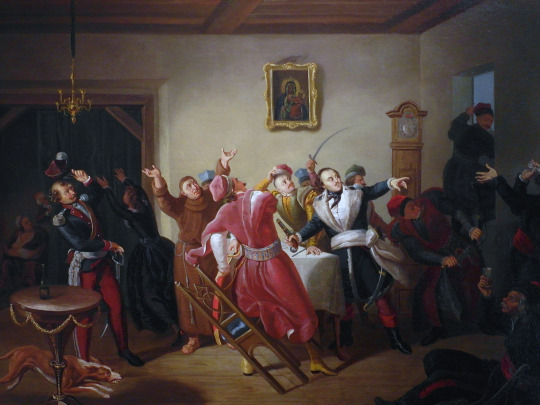
9.) NOTHING ABOUT US WITHOUT US While the king od France could've said "I am the state", in the Polish-Lithuanian Union the state were its citizens, that being the nobility. Nobility's agitation for their privileges gradually bore fruit - particularly important were the neminem captivabimus privilege, ensuring untouchability of a person, and the nihil novi rule, forbidding the king from issuing laws without the approval of a diet of nobles. Power of the nobility was among other things ensured by the size of this estate, since it made up 8-10% of the population (for comparison, in Great Britain, even in the mid-19th century only 6% of the population had a right to vote). In comparison with other countries, all members of the nobility were absolute equals in the eyes of the law. All of these rules were supported by the specific ideology of sarmatism, according to which were all noblemen, as the alleged descendants of the ancient ethnic group, required to protect the so-called "golden liberties" - set of rights and values which made the Polish-Lithuanian nobility consider themselves the most free nation under the the sun. Besides the exotic clothing [5], sarmatism was also expressed in numerous acts of rebellion against their own king - for example, in the 18th century nobility founded the Bar Confederation, which was supposed to rid the Commonwealth of the Russian influence, but ended up leading to the first division of Rzeczpospolita lands among the imperial powers.
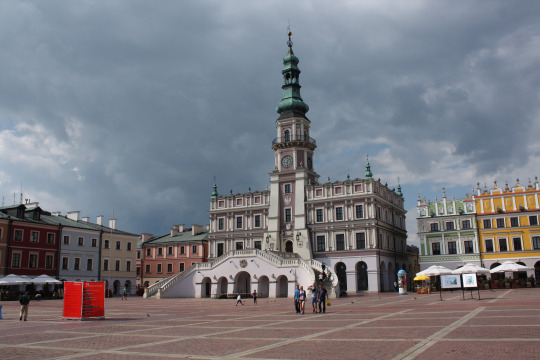
10.) SPLENDOR AND MISERY OF THE MAGNATE FAMILIES Though in the Commonwealth, any use of titles that would distinguish between lower and higher nobility was strictly forbidden, the issue was nonetheless made more complicated by the high economic inequality even among the nobles. Some noble houses were able to create estates so large even the royal holdings paled in comparison. Their dominance rested on their large wealth, high positions in state offices and background influence on politics. This informal class of magnates was most prominent in the eastern part of the country, where a handful of houses amassed giant private armies and sophisticated webs of noble clients, since many of the impoverished nobles voluntarily worked for the magnates, and some even voted in the parliament according to the wishes of their benefactors. These most powerful magnates were thus also titled "little kings", and some of them actually did become elected kings of Poland. The fact that many magnates, especially in Ukraine, were out of the reach of central state power and treated their subjects especially badly led to the outbreak of antimagnate rebellions, the most successful of which was the Bohdan Khmelnytsky Cossack uprising of 1648. However, the magnate activity cannot be seen as black-and-white, because their role also involved foundation and patronage on a grand scale - it was thanks to them that many treasures of Polish-Lithuanian architecture were created.
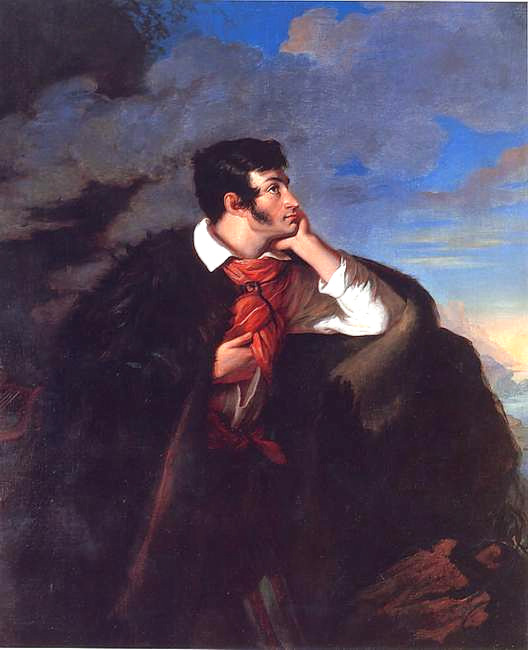
11.) LEGACY OF THE REPUBLIC OF MANY NATIONS The Republic of Poland-Lithuania was erased from the map in 1795. However, its tradition remained in the ethos of fight "for freedom yours and ours", which was echoed by the participants of many antirussian uprisings in the 19th and 20th century. This ethos called back to the tradition of free republic, which, unlike the Russian Empire - that forced subjugated polities to adopt the samoderzhavie [6], orthodoxy and russification triad - supposedly enabled different nations to keep their freedom and "unity in diversity". Although the ethnonationalism of the 20th century has dimmed the memories of their common legacy and caused plenty of bad blood among the different nations of former Rzeczpospolita, the idea of confederation or close cooperation against Russian imperialism was returning in their consciousness, whether during the 1863 uprising or shortly after World War I. In the communist era, the writer in exile Jerzy Giedroyc famously prophesized that Poland can be truly free only when so are Lithuania, Belarus and Ukraine. For Ukrainians and Belarussians, who have been threatened by the imperial idea of Greater Russia and the vision of a unified "Russian world" even after 1991, are heroes (like prince Konstanty Ostrogski or hetman Sahaidachny) and famous moments in the history of the Republic fundamental symbols of their national sovereignty and belonging to the European civilizational space. They will never cease to remind everyone that the Republic is not dead while we are alive and believe that the ties of mutual civic loyalty are stronger than differences in language, faith or ethnic origin, stronger than any enemy that would attempt to tear these ties of our values.
***
[1] - Russia. They are talking about Russia. Y'see, the etymology of "Russian" in Eastern Slavic languages is kinda confusing; originally, it meant all Eastern Slavs, but later on it came to be associated with the largest and most culturally dominant group - which is to say the predecessors of modern Russians under the rule of Princedom of Muscovy. Eventually, Ivan IV., the Grand Prince of Muscovy got himself crown the Tsar of All Russians, which was a bit presumptuous considering a whole lot of people who very much weren't under his rule also identified as the Rus'/Russians. Still, it stuck, and when Ukrainians and Belarussians wanted to define themselves against their Russian overlords, they abandoned the label "Russians" altogether. Calling post-Ivan the Terrible Russians "Muscovites" is a bit of antiquated terminology that would be common in Polish-Lithuanian Commonwealth.
[2] - Literal translation, because I don't know what it's called in English-speaking historical literature.
[3] - Used here in the older sense of the word, i.e. Eastern Slavic in general (see [1]). In this case, the Eastern Slavs in question are clearly mostly Ukrainians despite being called Rus'/Russians (YES I KNOW)
[4] - Okay, so have you seen the first episode? The whole "One of us was against. End of story. We have a democracy." thing was... Barely an exaggeration to be honest.
[5] - Compare the shit Jan Paweł and his friends wear to normal 17th century male clothing (to which Ciesław and especially magnate's son come pretty close to) and you'll get the gist.
[6] - rus. autocracy, or rather the name for specific absolutist tradition of Russian tzars
***
Notes on the pictures:
1.) Map of Rzeczpospolita from the first half of the 18th century (most likely around 1739), made by the cartographer Johann Baptist Homann.
2.) Tapestry with the coats-of-arms of Poland and Lithuania - The Union of Lublin led among other things to the joining of Polish and Lithuanian coats-of-arms, so the new state coats-of-arms combined the polish royal eagle on red field with the traditional symbol of Lithuania, the Pogoń (Vytis in Lithuanian), or the armored knight on a horse, which to this day is part of the legacy of the Grandduchy in modern Lithuanian and parts of Belarussian society.
3.) Battle of Orsha (1514) in which the orthodox prince Konstanty Ostrogski, claiming to carry on the legacy of the Kievan Rus', led the united Polish-Lithuanian forces and destroyed the Muscovite invasion army despite being outnumbered, saving the independence of the Grandduchy. After 1991 the day of the anniversary of this battle was celebrated as a holiday of the Belarussian army. The holiday was later abolished by the Lukashenko regime, one can currently end up in jail for celebrating it. In 2017, a common Lithuanian-Polish-Ukrainian brigade was named hetman Ostrogski.
4.) Royal Castle in Warsaw - Since the late 16th century, Warsaw became the new center of power in the Republic. The Royal Castle, originally the medieval seat of the dukes of Massovia, was rebuilt in the new baroque style. During World War II, the castle was completely destroyed. For a long time, the communist regime was refusing to greenlight its reconstruction, and its restoration based on old engravings and pre-war photographs was only made possible trough the massive public pressure.
5.) Painting of the French artist Jean-Pierre Norblin portrays a traditional part of the political life in Rzeczpospolita - a session of the so-called sejmik (Polish diminutive of sejm, a.k.a. diet). On these local assemblies of nobles of the given region, deputies for the meetings of the central sejm were elected and instructions for these deputies were agreed upon.
6.) Kruszyniany - Presence of the muslim Tartar community is part of the legacy of Rzeczpospolita. Tartars live on the territories of today's Lithuania, Belarus and Poland continuously since the 14th century. They have proven their worth as warriors in service of the Republic. Original Tartar mosques can be found especially in Podlesie in today's northeastern Poland and in Trakai in today's Lithuania.
7.) Ceiling of a synagogue reconstructed for the POLIN Museum of the History of Polish Jews in Warsaw, which in 2015 was awarded the title of Best Museum in Europe. It is in this modern museum that you can learn the most about the Jews of Rzeczpospolita, the largest Jewish diaspora at the time.
8.) Sobieski at Vienna - Painting of Jan Matejko depicts the Polish king Jan III. Sobieski, who after his famous triumph over the Ottoman Turks in 1683 sent a letter to pope Innocent IX., in which he writes that the Christian Vienna was saved.
9.) Casimir Pulaski, later national hero of the United States, escaped Poland after the failure of the Bar Confederation in 1769-1772. The confederation was one of the last attempts to free the country from the increasing dependency on Russia.
10.) Zamoćś - Renessaince city founded by an exceptional person. Jan Zamoyski came from a not very wealthy noble family, but trough his own merits eventually became the richest and most powerful man in the Republic. The town hall of Zamość on the photo.
11.) Adam Mickiewicz could be the symbol of the common legacy of Rzeczpospolita. The greatest poet in the Polish language literature was born in today's Belarus (1798) and always felt like a citizen of Rzeczpospolita. His most important work begins with a line "Lithuania, my fatherland!" It was Mickiewicz who was remembered by the pope John Paul II., when he proclaimed the Polish-Lithuanian Commonwealth the predecessor of cooperation of the entire continent within the European Union ("from the Union of Lublin to the European Union").
12 notes
·
View notes
Text
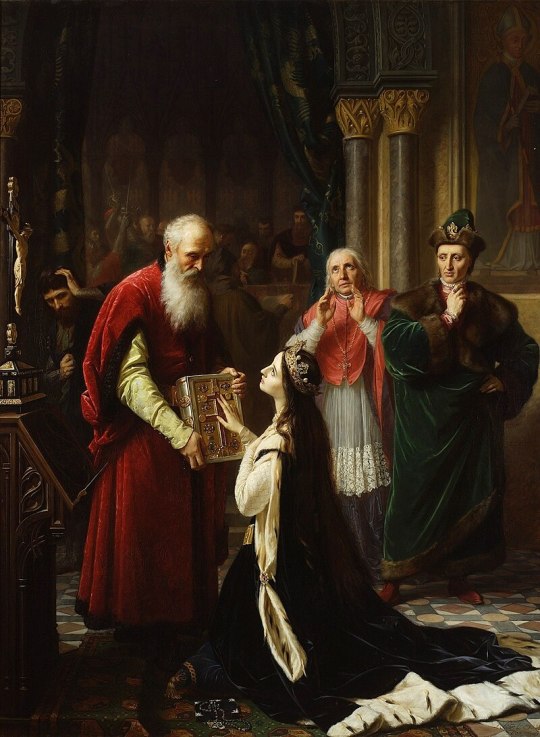
Jadwiga (1373 or 1374 – 17 July 1399), also known as Hedwig, was the first woman to be crowned as monarch of the Kingdom of Poland. She reigned from 16 October 1384 until her death. She was the youngest daughter of Louis the Great, King of Hungary and Poland, and his wife, Elizabeth of Bosnia. Jadwiga was a member of the Capetian House of Anjou, but she had more close forebears among the Polish Piasts than among the Angevins.
In 1375, it was planned that when becoming old enough, she would marry William of Austria and she lived in Vienna from 1378 to 1380. Jadwiga's father is often thought to have regarded her and William as his favoured successors in Hungary after the 1378 death of her eldest sister, Catherine, since the following year the Polish nobility had pledged their homage to Louis' second daughter, Mary, and Mary's fiancé, Sigismund of Luxembourg. However, Louis died, and in 1382, at her mother's insistence, Mary was crowned "King of Hungary". Sigismund of Luxembourg tried to take control of Poland, but the Polish nobility countered that they would be obedient to a daughter of King Louis only if she settled in Poland.
Queen Elizabeth then chose Jadwiga to reign in Poland, but did not send her to Kraków to be crowned. During the interregnum, Siemowit IV, Duke of Masovia, became a candidate for the Polish throne. The nobility of Greater Poland favored him and proposed that he marry Jadwiga. However, Lesser Poland's nobility opposed him, and they persuaded Queen Elizabeth to send Jadwiga to Poland.
Jadwiga was crowned king in Poland's capital, Kraków, on 16 October 1384. Her coronation either reflected the Polish nobility's opposition to her intended husband, William, becoming king without further negotiation, or simply, emphasized her status as the monarch. With her mother's consent, Jadwiga's advisors opened negotiations with Jogaila, Grand Duke of Lithuania, who was still a pagan, concerning his potential marriage to Jadwiga. Jogaila signed the Union of Krewo, pledging to convert to Catholicism and to promote conversion of his pagan subjects. Meanwhile, William hastened to Kraków, hoping to marry his childhood fiancé, Jadwiga, but in late August 1385 the Polish nobles expelled him.
Jogaila, who took the Catholic baptismal name Władysław, married Jadwiga on 15 February 1386. Legend says that she had agreed to marry him only after lengthy prayer, seeking divine inspiration. Jogaila, now styled in Polish as, Władysław Jagiełło, was crowned King of Poland on 4 March 1386 as Jadwiga's co-ruler. Jogaila worked closely with his wife in that role. In any case, her real political power was limited.
She remained passive when the rebellious nobles of the Kingdom of Hungary-Croatia murdered her mother in early 1387. After that, Jadwiga marched into the Kingdom of Galicia–Volhynia, which had been under Hungarian rule, and persuaded most of the inhabitants to become subjects of the Polish Crown. She mediated between her husband's quarreling kin and between Poland and the Teutonic Order.
After her sister Mary died in 1395, Jadwiga and Jogaila laid claim to Hungary against the widowed Sigismund of Luxembourg, but the Hungarian lords did not support their claim and Sigismund easily retained his Hungarian throne. Jadwiga died four years later due to postpartum complications.
In 1997, Jadwiga was canonized by the Catholic Church.
2 notes
·
View notes
Text
Wrapped up the first of two books on the Baltic region:
Wrapped up the first of two books on the Baltic region. This one covers a somewhat-neglected aspect of the Crusades, the wars in Northern Europe between military orders and the last vestiges of paganism (and the extension of the principle of the Fourth Crusade against Veliki Gospodin Novgorod). These wars started in the 1100s but are mostly famous for two battles, both of them involving Veliki Novgorod. One is the Battle of Lake Peipus, not least for its immortalization in a Soviet anti-Nazi propaganda film by Sergei Eisenstein. The other is the Battle of Tannenberg where Poland-Lithuania fought its first major battle as a unified state and completely wrecked the shit out of the German military order facing them.
These were but two battles in a much longer process whose main contributions to history were to lay the foundation of the Baltic Germans, who were essential to holding together Tsarist Russia, and to transform Baltic Prussia into the eastern territories of the Margravate of Brandenburg, which ultimately renamed itself after these territories and as the archetypal army with a country would unify the German lands into a single state for the first time in history.
Not a single soul involved in the interminable butchery and holy wars in the Baltic Sea described here would understand that this was the ultimate outcome of the events in question. From their perspective they were Christians fighting not merely the metaphorical propaganda paganism of Islam but the last outposts of European polytheism, which fell in the 1380s when Grand Duke Jogaila of Lithuania converted and became the first ruler of Poland-Lithuania (which really should have been Lithuania-Poland as the east was the more powerful of the two but I digress).
Between the ultimate conversion of Lithuanians, Latvians, and Estonians (as we'd define them today in any event) to Catholicism, the Germanization of the Prussians, and the replacement of the unstable quasi-demilitarized Veliki Novgorod with the iron-fisted tyranny of Moscow the Northern Crusades ended in another pattern the architects of the 1100s would never have seen, nor expected. They ultimately furthered the rise of state formation and the transformation of Northern Crusades into various Northern Wars that would finally end when Tsar Peter the Great shattered the Swedes and the last vestiges for centuries of Ukrainian aspiration to escape Muscovite control in the Battle of Poltava.
9/10.
#lightdancer comments on history#book reviews#european history#medieval history#baltic history#northern crusades
2 notes
·
View notes
Text
The whole crusades from 1009 to 1410 when the fucking Christians started to kill pagan Lithuanians because we were “barbarians” and our beliefs are wrong, even after 1387 when Polish-Lithuanian commonwealth king and Duke of grand duchy of Lithuania - Jogaila and dude of Grand duchy Lithuania - Vytautas Didysis did baptise Lithuania for our safety (even though we didn’t like it) the crusaders and swordsmen still attacked us even though many countries bishops and pope didn’t agree with it, and didn’t give permission to do so.
The crusades still attacked us, killed us until 1410 when Vytautas Didysis and Jogaila joined forces and destroyed those little bitches in the battle of Žalgiris.
That’s all I’m going to pass out now
just one?

I'm going to need a few days to comb though the list.
2K notes
·
View notes
Text
Watch "Jadwiga & Jogaila I've got my eyes on you (s4 memories) #jadwiga #jogaila #ivegotmyeyesonyou #viral" on YouTube
Jadwiga and Jogaila
2 notes
·
View notes
Text
Lithuania
General Information Lithuania is one of the Baltic countries in Northeastern Europe. In the 13th century, Lithuanian tribes united to withstand outer threats, with Mindaugas crowned king in 1253. In 1386, a Union between Lithuania and Poland was created due to the marriage of Lithuanian Grand Duke Jogaila and Polish Queen Jadwiga, developing to the Polish-Lithuanian Commonwealth in 1569. With the partitions of the late 18th century, the country ceased to exist and Lithuania mostly fell under Russian rule. In 1918, Lithuania gained independence until getting annexed by the Soviet Union, of which it stayed part until the Soviet Union’s collapse in 1991, during the latter part of World War II. Today, around 86% of the 2.8 Million inhabitants are ethnic Lithuanians, 5.7% are ethnic Poles, 4.5% ethnic Russians. About 77% of inhabitants are Roman Catholic. The capital is Vilnius.
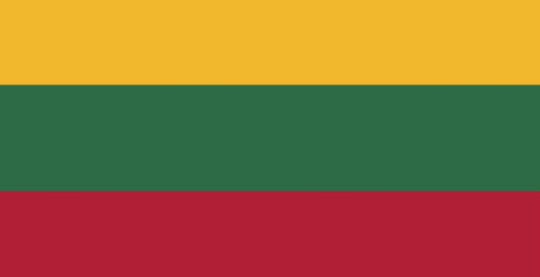
~ Anastasia
Economy The economy of Lithuania is the largest economy among the three Baltic states. Lithuania is a member of the European Union and belongs to the group of very high human development countries and is a member of the WTO and OECD. In the 1990s, Lithuania rapidly moved from a centrally planned economy to a market economy, implementing numerous liberal reforms. It enjoyed high growth rates after joining the European Union along with the other Baltic states, leading to the notion of a Baltic Tiger. Lithuania's economy (GDP) grew more than 500 percent since regaining independence in 1990. The Baltic states have a combined workforce of 3.3 million people, with 1.4 million of these working people living in Lithuania.

~ Damian
Sources: https://www.britannica.com/place/Lithuania https://en.wikipedia.org/wiki/Economy_of_Lithuania
1 note
·
View note
Photo
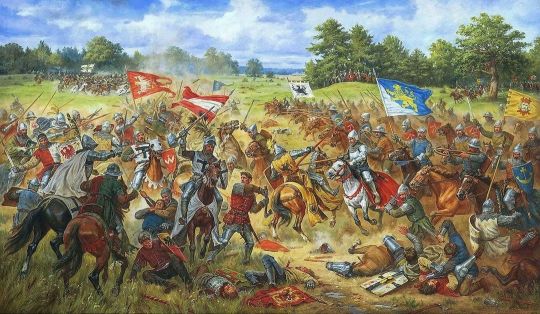
Galician units in the Battle of Grunwald between the Polish-Lithuanian Commonwealth and the Teutonic Knights on July 15, 1410. The Battle of Grunwald, Battle of Žalgiris or First Battle of Tannenberg was fought on 15 July 1410 during the Polish–Lithuanian–Teutonic War. The alliance of the Crown of the Kingdom of Poland and the Grand Duchy of Lithuania, led respectively by King Władysław II Jagiełło (Jogaila) and Grand Duke Vytautas, decisively defeated the German–Prussian Teutonic Knights, led by Grand Master Ulrich von Jungingen. Most of the Teutonic Knights' leadership were killed or taken prisoner. Although defeated, the Teutonic Knights withstood the siege of their fortress in Marienburg (Malbork) and suffered minimal territorial losses at the Peace of Thorn (1411) (Toruń), with other territorial disputes continuing until the Peace of Melno in 1422. The knights, however, would never recover their former power, and the financial burden of war reparations caused internal conflicts and an economic downturn in the lands under their control. The battle shifted the balance of power in Central and Eastern Europe and marked the rise of the Polish–Lithuanian union as the dominant political and military force in the region. [painting by Ukrainian artist Arthur Orlenov / Caption from Wikipedia] https://www.instagram.com/p/CRepALXNNZf/?utm_medium=tumblr
9 notes
·
View notes
Text
ive had to study their family tree quite intensively so i have so some minor insight on jogaila himself😌
but yes he did come from an aristocratic family, his father was Algirdas, the Grand Duke of Lithuania who had split his power with his brother Kęstutis when it came to ruling the actual dutchy. the split of the power continued into Jogaila's reign
the thing is that sources are difficult to track down so a lot of these dates are based on documents and first mentions. kids also werent necessarily mentioned in those unless they were rulers which is why we know so little of both jogaila and his predecessors which is very unfortunate for me bc studying them is my Hobby
i will say that both the lithuanian wikipedia and the encyclopedia lists his birthdate on 1351/2 with his birth month and day unknown otherwise. the wikipedia list his age as ~82 by the time of his death so its safe to assume that the age gap between Jadwiga and Jogaila was less than stellar by the time they married in 1386 even if the birth dates arent specified to the letter
History Rant??
I love you wikipedia because what the fuck do you mean we don't exactly know how old Władysław II Jagiełło/Jogaila (Jadwiga of Poland's husband) was???

that's a ten year difference. Granted, Jadwiga doesn't give us a better date, giving two dates with a 4 months difference between them but at least that's better than a whole decade.
I'm just wondering how did that happen, because he came from what I assume is a aristocratic family (his father was a Grand Duke and his mother was the daughter of a King).
I'm also concerned because Jadwiga was born between 3 October 1373 and 18 February 1374, which means that at the very least Jogaila was a decade older than her. I guess it's not really strange when it comes to medieval/royal marriages but it still annoyes me that there is no clear date of birth.
I'm studying prehistoric archaeology so I shouldn't really complain about the fact that historians can't keep track of someone's date of birth but it still confuses me. Apperently Jogaila spent his youth on his father's estate so did he just appear one random day as a toddler or as a full grown 10 year old???
11 notes
·
View notes
Text
ZYGMUNT II AUGUST
Monarch of the Polish-Lithuanian Commonwealth
(born 1520 - died 1572)

pictured below is a portrait of the King of Poland, by Lucas Cranach (the Younger) from c. 1550s
-------------------- ~ -------------------- ~ --------------------
SERIES - On this day August Edition: Zygmunt August was born on 1 August 1520.
-------------------- ~ -------------------- ~ --------------------
ZYGMUNT AUGUST was born on 1 August 1520, in Kraków, the capital of the Kingdom of Poland. He was the second child of Zygmunt I (the Old), King of Poland (also Žygimantas, Grand Duke of Lithuania) and his second wife Bona Sforza. As his father's eldest son, he was the heir of the Polish and Lithuanian thrones.
He was a member of the JAGIELLONIAN DYNASTY founded in 1386 by great-grandfathr Jogaila Algirdaitis, Grand Duke of Lithuania, and named after him.
By 1543 he married his first wife ELISABETH, an Archduchess of Austria. She was one of the daughters of Ferdinánd I, King of Bohemia (also Ferdinand I, King of Hungary) and Anna Jagiellon, his first cousin. But she died only two years after the wedding, without having any children.
In 1547 he married for the second time, to his mistress BARBORA. She was a controversial figure of Lithuanian origins, the youngster daughter of Jurgis I Radziwiłł and Barbara Kolanka
That same year he also succeeded his father as ZYGMUNT II, KING OF POLAND and as ŽYGIMANTAS II, GRAND DUKE OF LITHUANIA, ruling both in a personal union.
His second wife died in 1551 and he married for a third time, to KATHARINA, a younger sister of his first wife who was also an Archduchess of Austria. By 1556 his former/new father-in-law was crowned as Ferdinand I, Holy Roman Emperor.
As he did not have any children from his three marriages, the union of Poland and Lithuania under one Monarch would end with his death. However many nobles and himself did not want this to happen and signed the Union of Lublin in 1569, creating the Polish-Lithuanian Commonwealth uniting "forever" the Kingdom of Poland and the Grand Duchy of Lithuania under one Monarch.
And thus he became the first MONARCH OF THE POLISH LITHUANIAN COMMONWEALTH.
Exactly three years later, in 1572, the Monarch of Polish-Lithuanian Commonwealth died aged 51, in the town of Knyszyn in Poland, just four months after the death of his third wife.
-------------------- ~ -------------------- ~ --------------------
The Polish-Lithuanian Commonwealth had been created as an elective Monarchy, so anyone (with the right support) could be elected and rule as both King of Poland and Grand Duke of Lithuania.
To succeed him the first elected Monarch was Henri, Duke of Anjou, who ruled for less than two years until he secretly left Poland to succeed as Henri III, King of France.
Although he was the last male Jagiellonian and did not have children, his female Jagiellonian relatives and their descendants from the House of Vasa managed to continue to be elected as Monarchs of the Polish-Lithuanian Commonwealth until the 17th century.
#zygmunt ii august#sigismund ii august#king of poland#grand duke of lithuania#jagiellonian dynasty#jagiellonian#jagiellon#jagiello#polish royals#polish royalty#royals#royalty#monarchy#monarchies#royal history#polish history#european history#world history#history#history lover#16th century#sigismund i#holy roman emperor#charles v#ferdinand i#history with laura
3 notes
·
View notes
Photo

The Battle of Grunwald by Jan Matejko
The Battle of Grunwald, Battle of Žalgiris or First Battle of Tannenberg was fought on 15 July 1410 during the Polish–Lithuanian–Teutonic War. The alliance of the Crown of the Kingdom of Poland and the Grand Duchy of Lithuania, led respectively by King Władysław II Jagiełło (Jogaila) and Grand Duke Vytautas, decisively defeated the German–Prussian Teutonic Knights, led by Grand Master Ulrich von Jungingen. Most of the Teutonic Knights' leadership were killed or taken prisoner. Although defeated, the Teutonic Knights withstood the siege of their fortress in Marienburg (Malbork) and suffered minimal territorial losses at the Peace of Thorn (1411) (Toruń), with other territorial disputes continuing until the Peace of Melno in 1422. The knights, however, would never recover their former power, and the financial burden of war reparations caused internal conflicts and an economic downturn in the lands under their control. The battle shifted the balance of power in Central and Eastern Europe and marked the rise of the Polish–Lithuanian union as the dominant political and military force in the region.
The battle was one of the largest in medieval Europe and is regarded as one of the most important victories in the histories of Poland and Lithuania and is also widely celebrated in Belarus. It has been used as a source of romantic legends and national pride, becoming a larger symbol of struggle against foreign invaders. During the 20th century, the battle was used in Nazi German and Soviet propaganda campaigns. Only in recent decades have historians moved towards a dispassionate, scholarly assessment of the battle, reconciling the previous narratives, which differed widely by nation.
part 7
#jan matejko#poland#the battle of grunwald#art#artist#polish painter#white#woman#artists#portrait#royalty of the past#royalty#royal#court#princess#empress#rococo#aesthetic#detail#details#oil on canvas#19th century#18th century#academic style#painter
11 notes
·
View notes
Link
Zawisza Czarny was popularly referred to as Zawisza the Black because of his thick, black hair. He apparently enjoyed the moniker because he had a suit of black armor custom built. Today, this can still be seen in Częstochowa, Poland at the Jasna Góra Monastery, which is better known for its famed shrine of the Virgin Mary. Zawisza was probably born around 1379 into a family that bore the Sulima coat of arms of the Szlachta (a Polish caste of legally privileged nobles). Records show that in 1397 (at the age of 18) Zawisza married Barbara, a woman from a noble family that bore the Piława coat of arms, another branch of the Szlachta. Together, they had four sons.
Barbara is well remembered because some believe that it is through her connections that Zawisza gained the attention of the Royal Court. Barbara was the niece of Piotr Wysz Radoliński, Bishop of Krakow. Piotr worked in the court of Queen Jadwiga, better known in Western Europe as Queen Hedwig. Crowned in 1384, Hedwig was the first female monarch of the Kingdom of Poland, a post that she held until her death in 1399 due to complications from childbirth. Hedwig married the Grand Duke of Lithuania Jogaila in 1386 after he converted to Roman Catholicism. Jogaila thus became King Władysław II Jagiełło.
He served as a co-ruler with Hedwig, although he spent a good deal of time converting Lithuania to Christianity and stamping out the trouble caused by the Teutonic Knights, who felt that the King’s conversion was a sham and kept trying to conquer Lithuania with the intention of killing all of the still-pagan Lithuanians. Upon Hedwig’s death in 1399, King Władysław II Jagiełło became sovereign of Poland and commander of Poland-Lithuania until his death in 1434 of a bad cold.
During this time, Zawisza Czarny was presumably training as a knight and fighting in tournaments, at which he won much acclaim. The next time Zawisza’s name appears in the historical records is at the Battle of Grunwald between Poland-Lituania and the Teutonic Knights. It was one of the largest battles in Medieval Europe and was memorialized by the artist Jan Matejko in his 1878 painting, Battle of Grunwald . It is the image of Zawisza in this painting that is most widely used to depict him.
Zawisza served with distinction during the battle, which was a resounding success for King Władysław II Jagiełło. Zawisza was made a part of the delegation that negotiated a peace deal with Sigismund of Luxemburg, King of Hungary-Bohemia, perhaps because of this distinction or his reputation as a superb knight, or his family connections. The deal would become known as the Treaty of Lubowla.
In 1412, Zawisza cemented his place of honor in the eyes of the two monarchs at a tournament held by Władysław II and Sigismund. In all, there were about 1,500 knights there from all over Europe. It was Zawisza who won the tournament. Today, we know him better as the Black Knight who defeated Sir John II of Aragon at the tournament in Perpignan in modern-day southwest France. Zawisza continued to fight in tournaments and to serve as a diplomat for the King of Poland for many years. It is “through victories in numerous European tournaments, at the turn of the fourteenth and fifteenth century that he gained the fame which today the biggest stars of sport and pop culture enjoy”.
In 1428, Zawisza was called upon to join King Sigismund in his war against the encroaching Ottoman Turks. It proved to be a disastrous expedition. Zawisza fought the Turks at the Siege of Golubac, a fortress on the banks of the Danube in modern-day Serbia. Defeated by the main Ottoman army under Sultan Murad II, Sigismund ordered the retreat back to the Hungarian side of the Danube. Zawisza was in charge of guarding the soldiers and horsemen as they got onto the boats that would ferry them across the river. Legend has it that, when it was time for him to make the crossing, “Zawisza Czarny was angry the King acted as a coward [and] refused to retreat. Instead he continued fighting”. It is certain that he died as a result of this decision; however, whether he was killed in combat or was executed later while in Ottoman captivity is not known for certain.
This much is known about the once famed knight. Yet at a fundamental level, he is still a great mystery. In particular, the identity of his family and place of origin are not known. “We know that he was born there [in Garbow] and he was proud of his roots. That feeling has subsided despite the meteoric career in medieval tournaments. Whenever he was in Western Europe, he referred to himself as his father and grandfather: of Garbów” said Dr. Tomisław Giergiel from Institute of History, Maria Curie-Skłodowska University in Lublin, leader of the Zawisza research team. The project came about when Dr. Giergiel realized that, despite the many monuments to Zawisza of Garbow, “in the available archaeological documentation from the area of Garbów there isn't a single site from the Middle Ages”. In other words, the home of Zawisza’s family is missing – there is no castle or mansion or any other indication that a noble family once lived in the area.“There had to be a feudal centre there, associated with the fact that this was the residence of the Zawisza family, who ruled the land. There had to be rural settlements,” insists Dr. Giergiel.His team’s search will be complicated by the many Garbows now in eastern Poland including Stary Garbow, Nomy Garbow, and Gmina Garbow. The Zawisza project is still ongoing.
20 notes
·
View notes